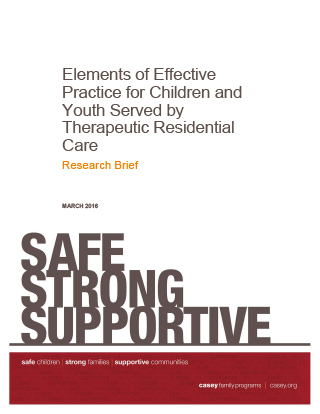Elements of Effective Practice for Children and Youth Served by Therapeutic Residential Care
Historically, group homes and residential treatment centers have been an important but controversial part of the child welfare continuum of services — part of a larger cluster of services called “congregate care.”
Group homes and residential treatment centers have been challenged to better define their intervention models and the youth they are best suited to serve within a context of child welfare values that include serving children in the least restrictive alternative settings with the most effective interventions. They have been asked to “right size” lengths of stay, to involve family members more extensively in treatment, to do more than manage problem behaviors by helping youth heal and learn skills for managing their emotions and behaviors that they can use in the community, and to conduct more extensive evaluation studies. States vary substantially in how extensively they use congregate care and for which groups of children and youth.
This research brief summarizes research that identifies key elements of effective practice that are based on the needs of children and youth referred to therapeutic residential care. It also describes how certain interventions and broader systems reforms, when implemented together, can help ensure that the right service, at the right dosage and at the right time, are provided — and for the shortest amount of time necessary — to achieve key therapeutic and permanency planning goals.
Executive SummarySummary with Infographics